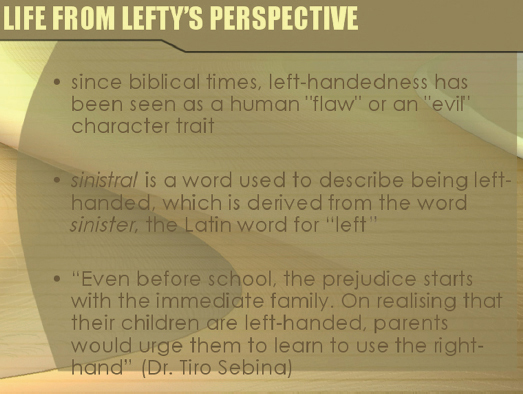Use colors with care.
Color printers, photocopiers, and online technology facilitate the use of color, but color does not necessarily make text easier to read. In most academic print documents, the only color you should use is black. Though color is typically used more freely in academic writing produced in other media (for example, Web pages or slideshow presentations), it should still be used in moderation and always with the aim of increasing your readers’ understanding of what you have to say. Always consider, too, whether your readers might be color-blind and whether they will have access to a full-color version of the document.
Although the slideshow design in Figure 21.1 is visually interesting and the heading is readable, the bulleted text is very hard to read because there is too little contrast between the text color and the background color.
In Figure 21.2, it is clear that the person who created the pie chart carefully chose the colors to represent the different data. What the person did not consider, however, is how the colors would look when printed out on a black-and-white printer. It is nearly impossible to associate the labels with the slices of the pie and thus to read the chart. If your work is likely to be photocopied, consider using patterns to distinguish pie slices or lines and bars in graphs.


Also consider the meanings associated with different colors. For example, in the United States and other Western cultures, white is typically associated with goodness and purity; in China, however, white represents grief and mourning. Although your use of color in an essay, a Web page, or a slideshow presentation might not carry such deep meaning, bear in mind that most people have emotional or psychological responses to colors and color combinations.